
Hale Farm & Village
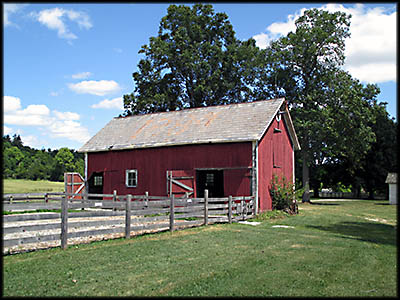

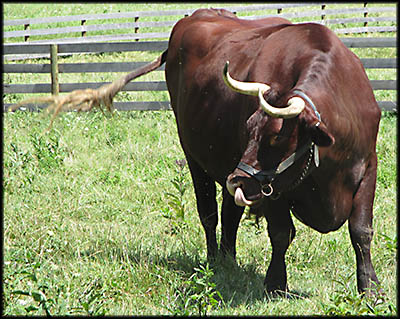
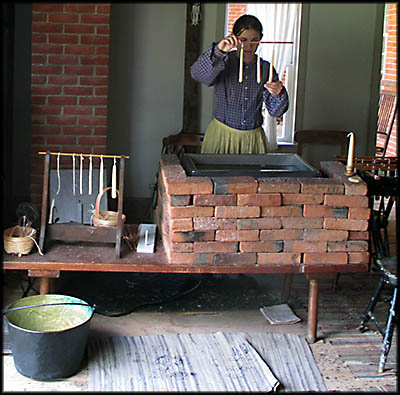
After a most disgusting lunch of undercooked chicken & dumplings eaten from a bowl made of nearly flavorless bread that I’d purchased from a restaurant called Rockne’s (recommended for connoisseurs of awful cuisine), my traveling companions and I continued for the final few miles we had left to reach Hale Farm & Village. This is a living museum, an interactive place that represent a specific historical era or year. As the three readers of my travel logs might have noticed, these are like catnip to me. I simply can’t resist them, a passion sparked by my first visit to historical Williamsburg, Virginia, in 1991.
Hale’s farm continued as a commercial venture until his great-granddaughter, Clara Belle Ritchie, made it into a museum that the Western Reserve Historical Society (in association with Hale Farm and Village) now runs. Unlike many of the living museums I’ve visited here in Ohio, this one actually pays its craftspeople and historical interpreters rather than relying on volunteers like most of the Ohio Historical Connection’s sites do. As a result, it has some of the nicest, most knowledgeable people I’ve ever met. In the small law office, for example, I learned that Benjamin Wade, one of the three lawyers who worked there, served as the Senate’s president pro tempore during the 1868 impeachment of President Andrew Johnson and the subsequent trial. Had the Senate found Johnson guilty of violating the Tenure of Office Act, the reason for the impeachment, Wade would have become the president, meaning Ohio would have sent nine rather than eight men to serve in the highest office in the land.

When it comes to historical structures, I prefer authentic ones to reconstructions, which somehow are just not the same. Hale Farm & Village is, so far I know, filled with nothing but original buildings, although some have had restoration work done to them to keep them from falling down.
In 1810, Jonathan Hale from Glastonbury, Connecticut, bought a large tract of land in the Western Reserve—territory once belonging to Connecticut that it ceded to the federal government and is now part of eastern Ohio—and there established the farm named after him. In 1824, he and his sons built a house using bricks they themselves made, one complete with a spring running beneath it in which the family refrigerated foodstuffs. It stands today and is among the many houses you can explore.
In 1810, Jonathan Hale from Glastonbury, Connecticut, bought a large tract of land in the Western Reserve—territory once belonging to Connecticut that it ceded to the federal government and is now part of eastern Ohio—and there established the farm named after him. In 1824, he and his sons built a house using bricks they themselves made, one complete with a spring running beneath it in which the family refrigerated foodstuffs. It stands today and is among the many houses you can explore.
The village that has become part of Hale Farm never existed. It is made up of a few structures original to the farm plus many historical buildings moved there from elsewhere. For the most part the farm and village try to emulate life in the 1850s, offering a variety of craftsmen and historical interpreters to help visitors get a sense of this. We watched in awe as the glassmaker created a glass from beginning to end, and found the ceramicist highly informative. Other craftspeople include the candle maker, a weaver, and a maker of brooms. The blacksmith had gone elsewhere for the day, and the carpenter’s shop was empty because the fellow who used to do that had since left to work in Williamsburg, Virginia.
We spent a good three hours (maybe a bit more) wandering about, and, had the ambition seized us, might have explored a more, including the Maple Sugar Bush (where they tap the maple trees when the season arrives) and the Great Lakes Brewing Company Pint Size Garden, which is named this, I believe, because that company uses some of the plants grown in it for its restaurant. Oh, and this being a farm, one can see a variety of animals, including sheep, pigs, two bulls, and numerous chickens. Those with children will have no trouble, by the way, finding interesting things for them to investigate or learn.🕜

Jonathan Hale used this hide trunk to carry his belongings from Connecticut to Ohio.
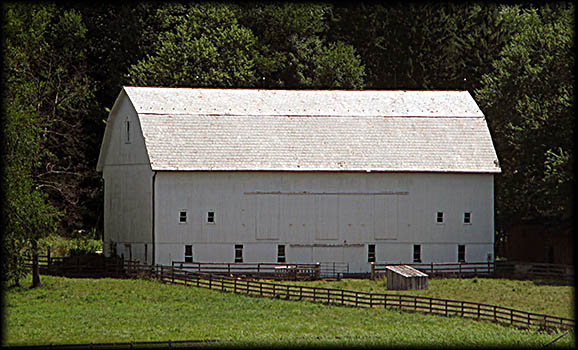
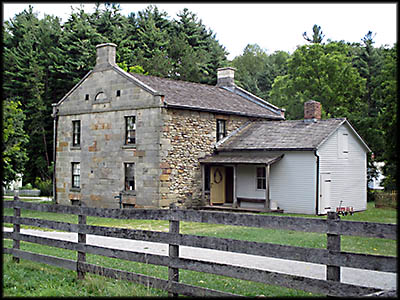
This house is so heavy it had to be transferred from its original place to Hale Village one stone at a time.
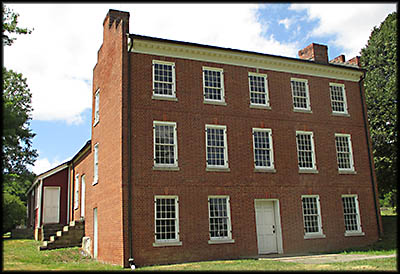
Hale House


Barn